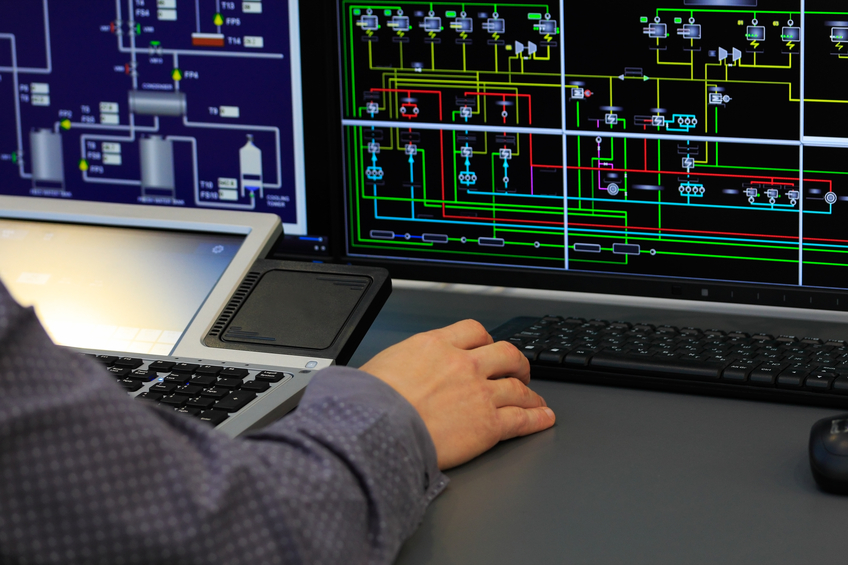Saskatchewan Electrical 30 PDH Discount Package 2
Courses in this Package
5G Technology Fundamentals (E02-027)
Electrical Test Instruments and Measuring Devices (E02-003)
Fundamentals of Lightning Protection Systems (E02-009)
Strike Terminations for Lightning Protection Systems (E03-012)
HVAC Instrumentation and Controls (M06-019)
Introduction to Control and Instrumentation (E04-037)
Introduction to Transformers (E05-013)
Programmable Logic Controllers Fundamentals (E01-008)
Receivers: From Spark to 16-Qam (E03-023)
SCADA System Fundamentals (E01-007)
General Principals of Engineering Ethics for Saskatchewan Professional Engineers (SK1-001)

This online engineering PDH course will explore the fundamentals of several technological advancements and improvements that enable the deployment of 5G.
5G has arrived! In this exciting launch into the next decade of cellular technology, 5G is revolutionizing the modern way of life. Whether you are a wireless industry expert or data consumer, 5G technology devices are everywhere and you may even own one as we speak. Today’s advancements in 5G leverages many improvements on bandwidth efficiency, power efficiency (battery life), network capacity, latency rates, reduction of multipath effects, and other technological advances that ultimately enable mobile users as well as the Internet of Things (IoT) to be ubiquitously connected to the internet. As the world becomes increasingly data hungry Cisco Systems estimates global data usage to be in the billions of gigabytes every month! Have you ever considered what makes this possible? Or have you pondered to yourself where all of the wireless bandwidth could possibly come from? Join us in exploring the technologies that make the deployment of 5G possible.
This 2 PDH online course is applicable to electrical, civil, and mechanical engineers, as well as project managers in construction, and other professionals who are interested to grasp a fundamental understanding of 5G technologies that can help us not only improve quality of life, but also usher us into the endless possibilities that this generation of 5G can bring.
This P.Eng. continuing education course is intended to provide you with the following specific knowledge and skills:
- Familiarizing with a brief overview of the evolution of wireless technology
- Understanding challenges to overcome in order to achieve 5G standards
- Understanding 5G performance benchmarks (“5G Triangle”)
- Learning examples of potential 5G use cases
- Learning how to achieve 5G performance by addressing 2 important questions:
- Where can we get more spectrum?
- How can we better utilize existing spectrum?
- Learning Millimeter wave technology for expanding spectrum capacity
- Network congestion in existing spectrums
- Propagation vulnerabilities
- Attenuation trade-offs
- Antenna size advantages
- Learning MIMO technology for increasing spectral efficiency
- Overcoming small-scale propagation effects (multipath fading)
- Antenna diversity for multiplying radio signals
- OFDM modulation scheme basics
- MIMO modes
Once you complete your course review, you need to take a multiple-choice quiz consisting of ten (10) questions to earn 2 PDH credits. The quiz will be based on the entire document.
Upon successful completion of the quiz, print your Certificate of Completion instantly. (Note: if you are paying by check or money order, you will be able to print it after we receive your payment.) For your convenience, we will also email it to you. Please note that you can log in to your account at any time to access and print your Certificate of Completion.

This online engineering PDH course describes electrical measuring devices such as voltmeters, ammeters, ohmmeters and wattmeters. It also describes test equipment such as multimeters and meggers. It discusses the electrical parameters measured and the principles of operation of common instruments.
This 2 PDH online course is applicable to electrical and computer engineers, design and construction personnel, technical staff and facility operators who are interested in gaining a better understanding of electrical test instruments and measuring devices.
This P.Eng. continuing education course is intended to provide you with the following specific knowledge and skills:
- Understanding meter movements
- Learning about the various electrical measuring devices (voltmeters, ammeters, ohmmeters and wattmeters)
- Learning about the various electrical test equipment (multimeters and meggers)
In this professional engineering CEU course, you need to review Module 14, "Test Instruments and Measuring Devices" of the Department of Energy Publication DOE-HDBK-1011/2-92, "Electrical Science".
Upon successful completion of the quiz, print your Certificate of Completion instantly. (Note: if you are paying by check or money order, you will be able to print it after we receive your payment.) For your convenience, we will also email it to you. Please note that you can log in to your account at any time to access and print your Certificate of Completion.

This online engineering PDH course provides information concerning the principles of lightning protection systems. Protection principles of the five basic lightning protection subsystems discussed in this course are as follows:
- Strike Termination Subsystem
- Conductor Subsystem
- Grounding Electrode Subsystem
- Equipotential Bonding Subsystem
- Surge Protection Subsystem
Given this understanding of lightning protection system operation, this course offers in conclusion a brief discussion of the applicable design standards commonly used for lightning protection. Specific design requirements can be found in the National Fire Protection Associations’ Standard for the Installation of Lightning Protection Systems,’ NFPA 780.
This 2 PDH online course is applicable to civil and electrical engineers, architects, as well as design professionals and construction personnel involved with the planning and design of structures requiring lightning protection.
This P.Eng. continuing education course is intended to provide you with the following specific knowledge and skills:
- Understanding the basics of how lightning protection systems function
- Knowing the subsystems that comprise the lightning protection system
- Understanding the purpose and basic function of each of the subsystems
- Identifying the engineering and construction standards for lightning protection systems commonly used in the United States
In this professional engineering CEU course, you need to review the course document titled, “Fundamentals of Lightning Protection Systems”.
Upon successful completion of the quiz, print your Certificate of Completion instantly. (Note: if you are paying by check or money order, you will be able to print it after we receive your payment.) For your convenience, we will also email it to you. Please note that you can log in to your account at any time to access and print your Certificate of Completion.

This online engineering PDH course provides information concerning the Strike Termination Subsystem of a Lightning Protection System (LPS). It is one of the five following subsystems of a lightning protection system:
- Strike Termination Subsystem
- Conductor Subsystem
- Grounding Electrode Subsystem
- Equipotential Bonding Subsystem
- Surge Protection Subsystem
An overview of the complete lightning protection systems and its functioning is given in CED Course No. E02-009, Fundamentals of Lightning Protection Systems. Completing that course is recommended as a prerequisite to this course but is not necessary.
The STS intercepts the lightning event. Specifications are given to arrange the receptors of the strike, called strike terminations, in such a fashion that protects a structure and adjacent areas. These specifications are based on the guidance of well-accepted design standards commonly used for lightning protection. Specific design requirements can be found in the National Fire Protection Associations’ Standard for the Installation of Lightning Protection Systems,’ NFPA 780.
This 3 PDH online course is applicable to architects, civil and electrical engineers, as well as design and construction personnel involved with the planning and design of structures requiring lightning protection.
This P.Eng. continuing education course is intended to provide you with the following specific knowledge and skills:
- Understanding the purpose and function of the STS
- Knowing the material requirements for the STS
- Understanding the concept of Zone of Protection afforded by the STS
- Knowing the specifications for the arrangement of strike terminations to protect a structure from lightning as part of a total LPS
- Identifying the engineering and construction standards for lightning protection systems commonly used in the United States
In this professional engineering CEU course, you need to review the course document titled, “Strike Termination for Lightning Protection Systems”.
Upon successful completion of the quiz, print your Certificate of Completion instantly. (Note: if you are paying by check or money order, you will be able to print it after we receive your payment.) For your convenience, we will also email it to you. Please note that you can log in to your account at any time to access and print your Certificate of Completion.

This online engineering PDH course covers the fundamentals of automatic controls in the HVAC system. Emphasis is placed on the control principles, terminology, basic components, control devices and direct digital control systems. Numerous illustrations and examples have been included to enhance the understanding of the course material.
The HVAC systems are designed for peak conditions. Because these conditions prevail only for small period in a year, the HVAC equipment must operate most of the time at lean capacity. The function of the control system is to adjust the equipment capacity to match the load. Automatic controls are necessary not only to achieve the design conditions in the conditioned space but are also required for efficient operation of the HVAC system. The main parameters to be controlled in air conditioning system are temperature, pressure, humidity, air quality and thermal energy distribution.
It is important to note that the primary factor influencing the effectiveness of HVAC system is the proper mechanical design itself. The HVAC system must be properly designed to satisfy the process or comfort requirements. Only when this criterion is satisfied can a suitable control system be applied.
The 6 PDH online course is applicable to mechanical, electrical, controls and HVAC engineers, architects, building designers, contractors, estimators, energy auditors and facility managers who are interested in gaining a better understanding of HVAC instrumentation and controls. This course is aimed at the personnel who have some limited background in the air conditioning field or who may be having difficulty relating controls to air-conditioning equipment.
This P.Eng. continuing education course is intended to provide you with the following specific knowledge and skills:
- Defining the basic blocks of control system
- Distinguishing between open loop and closed loop systems
- Understanding the different types of temperature, humidity, pressure and flow sensors
- Defining setpoint, control point, offset and throttling range
- Determining controller action for given the application
- Distinguishing between direct and reverse reset
- Distinguishing between the mixing and diverting valves
- Defining flow coefficient, valve authority, controllability, rangeability and turndown ratio;
- Describing the sizing of control valves
- Defining proportional control, PI control and PID control
- Describing direct digital control terminology, hardware and control network
- Citing the energy saving benefits of DDC systems
In this professional engineering CEU course, you need to review the document titled "HVAC Instrumentation and Controls".
Upon successful completion of the quiz, print your Certificate of Completion instantly. (Note: if you are paying by check or money order, you will be able to print it after we receive your payment.) For your convenience, we will also email it to you. Please note that you can log in to your account at any time to access and print your Certificate of Completion.

This engineering online PDH course will establish, through slides and discussions, the basic principles of control systems, including systems such as loops control, elements, types of controls and control circuit diagrams. Additionally, it will present diagrams of basic instruments to illustrate how the instrument functions.
The Introduction to Instrumentation and Controls presents the elements that make a control system and the most common instrumentation used in industry. It describes basics of control loops, configuration, including control loop and its elements. It also describes instrumentation for pressure, flow, level and temperature, explaining their physical principles, and common applications. Introduction to motor controls is included in the last section of the course. Basic motor control schematics for simple motor starters are explained. Finally, basic description of a of modern motor control center is presented.
The 4 PDH online course is intended for electrical, chemical, and mechanical engineers, as well as project managers in industry, who are interested either in learning more about control systems and instrumentation or wish to refresh basic control and instrumentation concepts.
This P.Eng. continuing education course is intended to provide you with the following specific knowledge and skills:
- Identifying system elements and components
- Understanding the basics of controls such as loop and open controls and their respective elements
- Learning about the methods and principles of instrumentations
- Familiarizing with the Basics of motor control elements
In this professional engineering CEU course, you need to review the course document titled, "Introduction of Control and Instrumentation" by Manuel Gooding.
Once you complete your course review, you need to take a multiple-choice quiz consisting of twenty five (25) questions to earn 4 PDH credits. The quiz will be based on the entire document.
Upon successful completion of the quiz, print your Certificate of Completion instantly. (Note: if you are paying by check or money order, you will be able to print it after we receive your payment.) For your convenience, we will also email it to you. Please note that you can log in to your account at any time to access and print your Certificate of Completion.

This online engineering PDH course describes the basic concept, function, types, and the different components of electrical transformers.
A transformer is an electrical equipment that transfers energy from one circuit to another by electromagnetic induction. They are often used to convert between high and low voltages (step-up or step down). Transformers and their components vary depending on the application and are available in several different configurations.
This 5 PDH online course is applicable to electrical and mechanical engineers, maintenance personnel and other technical staff who are interested in gaining a better understanding of transformers.
This P.Eng. continuing education course is intended to provide you with the following specific knowledge and skills:
- Understanding the function of transformers and their physical characteristics
- Familiarizing with the different components of transformers
- Learning how to identify a transformer as step-up or step-down and state the current ratio of a transformer when given the turns ratio
- Learning the mathematical relationship between the power in the primary and the power in the secondary of a transformer
- Understanding the basics of the different types of transformers
Upon successful completion of the quiz, print your Certificate of Completion instantly. (Note: if you are paying by check or money order, you will be able to print it after we receive your payment.) For your convenience, we will also email it to you. Please note that you can log in to your account at any time to access and print your Certificate of Completion.

This online engineering PDH course provides the basic terminology and functionality of a Programmable Logic Controller (PLC). PLC's are integral parts of most modern automation systems and have been since their development in the late 1960's.
This 1 PDH online course is applicable to engineers interested in being introduced to the basic components and terminology of Programmable Logic Controllers. No previous knowledge of PLC's or electronic controls is needed for this course.
This P.Eng. continuing education course is intended to provide you with the following specific knowledge and skills:
-
Learning about the components and terminology of a PLC
-
Understanding the basic functionality and operations of a PLC
In this professional engineering CEU course you will need to review the course document tilted, "PLC Fundamentals".
Upon successful completion of the quiz, print your Certificate of Completion instantly. (Note: if you are paying by check or money order, you will be able to print it after we receive your payment.) For your convenience, we will also email it to you. Please note that you can log in to your account at any time to access and print your Certificate of Completion.

This online engineering PDH course covers the development of radio receivers from the late 1800s to the present, simultaneously in separate dimensions: Time and Frequency. As communications technology has progressed since the late 1800s, so has the upper frequency limit. The advancement of technology and upper frequency have happened in parallel so organizing this course in chronological order dovetails well with increasing frequencies.While circuitry is not addressed except in a very few cases where it cannot be avoided, there is extensive information to cover the evolution of radio receivers.
In the last few decades, incredible advances in computer technology have led to the ability to digitize received signals for computer processing. This brings tremendous advantages, as adding software capabilities does not require hardware changes. For example, a receiver can be configured with a wide selection of filter bandwidths to allow matching the filter to the incoming signal. Such a system would be unaffordable in hardware. As analog-to-digital conversion becomes possible at ever higher frequencies, the conversion point has been migrating closer and closer to the antenna.
We are now in the era of the software-defined-radio. Regardless, the physics of the universe still applies, and the techniques developed over the last century are still relevant, even if incorporated into a computer program. George Santayana warned that those who ignore history are doomed to repeat it. While he did not have the evolution of communications gear in mind, his rule applies here too.
This 3 PDH online course is intended for electrical or communications engineers, design professionals, and others interested in gaining an understanding of radio receivers.
This P.Eng. continuing education course is intended to provide you with the following specific knowledge and skills:
-
Understanding from early experiments in what came to be known as wireless
-
Learning about wireless spark transmitters and receivers
-
Learning about CW communication
-
Learning about AM broadcast reception and its evolution to today
-
Learning about HF band shortwave radio and the move to single sideband
-
Learning about FM broadcast reception
-
Learning about VHF radios and repeaters
-
Learning about data radios and modulation techniques
Upon successful completion of the quiz, print your Certificate of Completion instantly. (Note: if you are paying by check or money order, you will be able to print it after we receive your payment.) For your convenience, we will also email it to you. Please note that you can log in to your account at any time to access and print your Certificate of Completion.

This online engineering PDH course provides the basics of Supervisory Control and Data Acquisition (SCADA) Systems as well as an understanding of the basic terminology and components of a SCADA system. SCADA systems are found wherever processes are being run with large amounts of data to be monitored or remote equipment is being operated at unmanned facilities. Therefore, any engineer has the potential to interface with a SCADA system.
This 1 PDH online course is applicable to engineers interested gaining an understanding of the basic components and terminology of SCADA systems. No previous knowledge of SCADA systems or controls is needed for this course.
This P.Eng. continuing education course is intended to provide you with the following specific knowledge and skills:
- Knowing the basic definitions
- Learning about the basic architecture of SCADA systems and their core components
- Knowing the basic communication equipment and its use by SCADA systems
- Understanding of the two major communication protocols used with SCADA systems
In this professional engineering CEU course you will need to review the course document titled, "SCADA System Fundamentals".
Upon successful completion of the quiz, print your Certificate of Completion instantly. (Note: if you are paying by check or money order, you will be able to print it after we receive your payment.) For your convenience, we will also email it to you. Please note that you can log in to your account at any time to access and print your Certificate of Completion.

This online engineering PDH ethics course is (1) the study of moral issues and decisions confronting individuals and organizations involved in engineering and (2) the study of related questions about moral conduct, character, ideals and relationships of peoples and organizations involved in technological development (Martin and Schinzinger, Ethics in Engineering).
This course will address the principles of engineering ethics that every engineer is expected to live by when practicing their profession. It will also present unique ethical case studies randomly selected to demonstrate ethical challenges for professional engineers and alternatives to address these challenges.
This 1 PDH online course is applicable to Professional Engineers licensed in the Province of Saskatchewan and who are required to demonstrate continuing professional competency in engineering ethics as a condition of their license renewal. For each renewal period, every licensee must complete at least one (1) professional development hour relative to the principals of professional responsibility, conduct and ethics.
This P.Eng. continuing education course is intended to provide you with the following specific knowledge and skills:
- Understanding the definition of engineering ethics
- Learning how to hold the utmost safety, health, and welfare of the public when practicing your profession
- Familiarizing with the conditions to issue public statements
- Gaining a general overview on how to represent each employer or client as a faithful trustee
- Learning how to build your professional reputation on the merit of your services
- Understanding professional ethical practices through presenting realistic case studies
- Learning how to handle proprietary information and intellectual property rights
Upon successful completion of the quiz, print your Certificate of Completion instantly. (Note: if you are paying by check or money order, you will be able to print it after we receive your payment.) For your convenience, we will also email it to you. Please note that you can log in to your account at any time to access and print your Certificate of Completion.